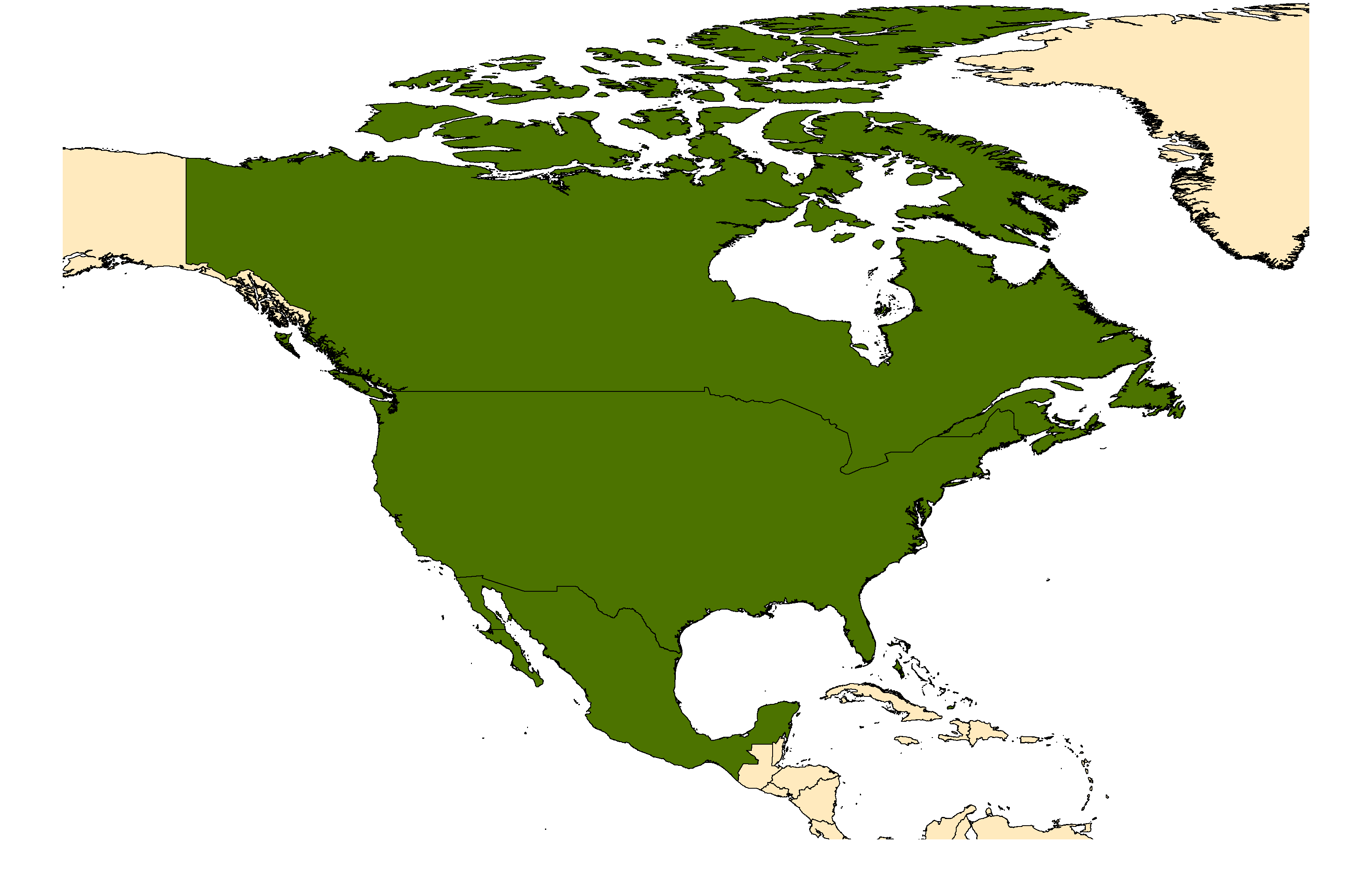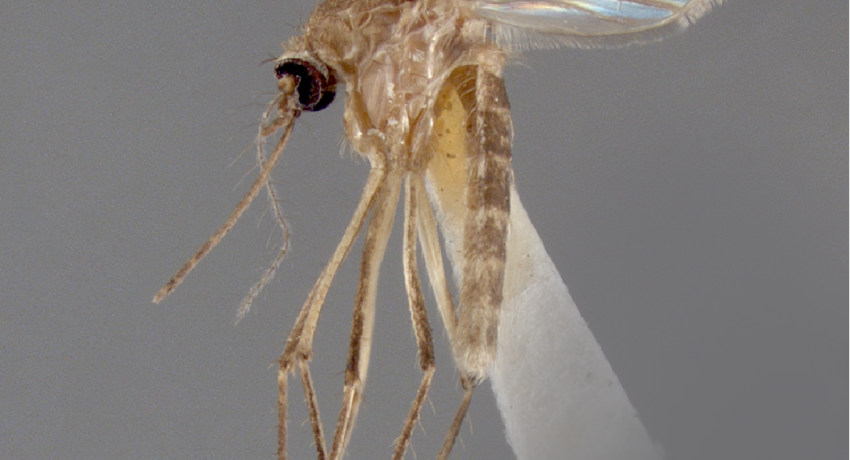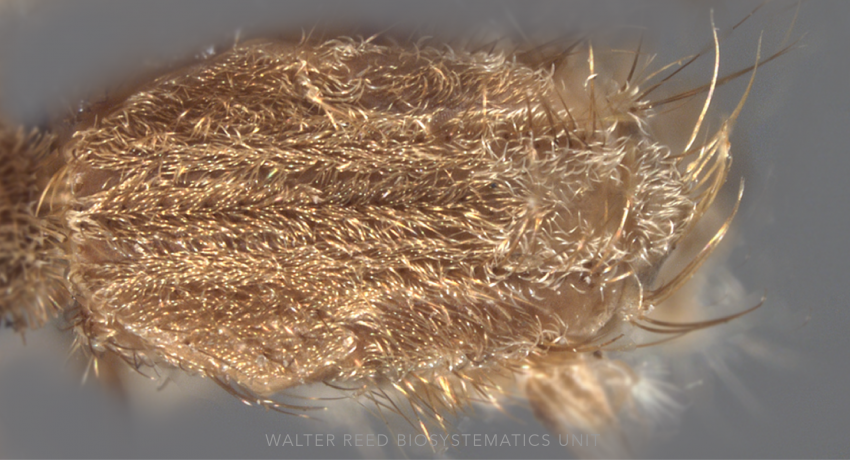NEARCTIC REGION
Etymology: pertaining to salt (L); in contrast to nigritulus
Culex salinarius is the nominotypical member of the Salinarius Complex of the Pipiens Group (subgenus Culex), which contains six species: Cx. alani Forattini, Cx. archegus Dyar, Cx. bilineatus Theobald, Cx. dolosus (Lynch Arribálzaga), Cx. Salinarius and Cx. spinosus Lutz. This species can be found in great numbers in coastal areas in North America, but despite its misleading name, Cx. salinarius immatures are found mostly in freshwater, and do not tolerate salinity well. The dark-scaled proboscis of Cx. salinarius differentiates it from all other drab Culex (Culex) in the region.
Type locality: (Elizabeth), New Jersey, United States
Type depository: U.S. National Museum, Washington, D.C., United States (USNM)
DIAGNOSTIC CHARACTERS (Click photos to view; mouse over and click large photo to zoom in.)
ADULT (illustrated): Head: Proboscis dark-scaled, slightly paler ventrally; dorsally with narrow curved scales and long erect forked scales. Thorax: Scutum with acrostichal setae; scutellar midlobe with basal patch of fine dark brown scales; pleuron with several groups of broad scales; mesepimeron with distinct median patch of white scales. Leg: Ta-III1-5 dark-scaled. Abdomen: II,III-Te with indistinct or very narrow basal pale bands; VII,VIII-Te mostly covered by coppery scales.
LARVA (not illustrated): Head: Seta 6-C 3,4 branched. Thorax: Seta 1-M long, 2,3 branched, much longer than 2-M. Terminal segments: Siphon without small spines near apex; siphon index 5.7–8.5; seta 1-S basal-most tuft 2,3 branched, just slightly longer than width of siphon at insertion; seta 2-X 3-branched.
TAXONOMIC KEYS
Carpenter & LaCasse 1955
Dodge 1966
Darsie & Ward 2005
Becker et al. 2010
Harrison et al. 2016
Exemplar DNA sequences
Cx. salinarius COI: MG086044, JX260663–67, KP281746–51, MH801135–37
BIONOMICS
Immatures
Typical Cx. salinarius immature habitats include the fresher water portions of salt marshes, grassy pools, ditches, and ponds and—less frequently—rain barrels, animal footprints and even tree holes. Draining marshes and installing freshwater impoundment to control populations of Aedes sollicitans (Walker) creates excellent immature habitats for Cx. salinarius.
Adults
Female Cx. salinarius are aggressive nocturnal biters and large swarms form at twilight. Their preferred hosts are birds—and more than double the number of eggs ( max = ˜50 per ovicycle) are produced following a bird meal compared to egg batches after less preferred mammalian blood meals. At high densities, feeding behaviors become more opportunistic, and Cx. salinarius can be an extreme nuisance to humans—readily entering homes to feed. In southern populations, adults and immatures are active year-round. In the north, and unusually among North American Culex, Cx. salinarius overwinters in natural shelters, such as muskrat huts and other animal burrows.
DISTRIBUTION NOTES
Bahamas, Bermuda, Canada, Mexico, United States (continental).

WRBU VECTOR HAZARD REPORTS
View other WRBU Vector Hazard Reports
Available GIS Models:
None
IMPORTANT REFERENCES (full citations below)
Coquillett 1904b: 73 (M, F, L)
Ross 1947: 49 (M*, F, L*)
Darsie 1951: 34 (P*)
Yamaguti & LaCasse 1951c: 58 (M*, F*, L*)
Carpenter & LaCasse 1955: 290 (M*, F*, L*; keys)
Stone & Knight 1957a: 56 (lectotype designation)
Dodge 1966: 370 (1st instar L*; key)
Bram 1967a: 95 (M*, F, L)
Darsie & Ward 2005 (F*, L*; keys, distribution)
Darsie et al. 2006 (L*; taxonomy)
Darsie & Day 2006 (P*)
Becker et al. 2010: 397 (F*, L*; key, taxonomy, distribution, bionomics)
Harrison et al. 2016 (F*, L*; keys, distribution)
CURRENT SYNONYMS
None
CITED REFERENCES
Becker, N., Petrić, D., Zgomba, M., Boase, C., Madon, M., Dahl, C., & Kaiser, A. (2010). Mosquitoes and their control (Second ed.). Berlin Heidelberg: Springer-Verlag.
Bram, R.A. (1967a). Classification of Culex subgenus Culex in the New World (Diptera: Culicidae). Proceedings of the United States National Museum, 120(3557), 1–122.
Carpenter, S.J., & LaCasse, W.J. (1955). Mosquitoes of North America (North of Mexico). Berkeley, Los Angeles: University of California Press.
Coquillett, D.W. (1904b). Notes on Culex nigritulus. Entomological News, 15, 73–74.
Darsie, R.F., Jr. (1951). Pupae of the culicine mosquitoes of the northeastern United States (Diptera, Culicidae, Culicini). Ithaca, NY: Cornell University Agricultural Experiment Station Memoir 304.
Darsie, R.F., Jr., & Day, J.F. (2006). Redescription of the pupa of Culex salinarius Coquillett and comparison with Culex nigripalpus Theobald. Journal of the American Mosquito Control Association, 22(3), 547–549.
Darsie, R.F., Jr., & Ward, R.A. (2005). Identification and geographical distribution of the mosquitoes of North America, north of Mexico. Gainesville, FL: University Press of Florida.
Darsie, R.F., Jr., Almasi, J.R., & Day, J.F. (2006). Studies of the genus Culex Linnaeus in Florida III. Redescription of the fourth-stage larva of Culex salinarius Coquillett and comparison with that of Cx. nigripalpus Theobald. Journal of the American Mosquito Control Association, 22(2), 179–184.
Dodge, H. R. (1966). Studies on mosquito larvae II. The first-stage larvae of North American Culicidae and of world Anophelinae. Canadian Entomologist, 98, 337–393.
Harrison, B.A., Byrd, B.D., Sither, C.B., & Whitt, P.B. (2016). The mosquitoes of the Mid-Atlantic Region: an identification guide (Vol. 1). Madison Heights, MI: Publishing XPress.
Ross, H.H. (1947). The mosquitoes of Illinois (Diptera, Culicidae). Bulletin of the Illinois Natural History Survey, 24(1), 1–96.
Stone, A., & Knight, K.L. (1957a). Type specimens of mosquitoes in the United States National Museum. IV: The genus Culex (Diptera, Culicidae). Journal of the Washington Academy of Sciences, 47(2), 42–59.
Yamaguti, S., & La Casse, W. J. (1951c). Mosquito fauna of North America. Part IV. Genera Culex and Deinocerites. Office of the Surgeon General, Headquarters, 8th Army, APO 343. United States. 207th Malaria Survey Detachment.
CITE THIS PAGE
Walter Reed Biosystematics Unit (Year). Culex salinarius species page. Walter Reed Biosystematics Unit Website, http://wrbu.si.edu/vectorspecies/mosquitoes/salinarius, accessed on [date (e.g. 03 February 2020) when you last viewed the site].











































































































































































